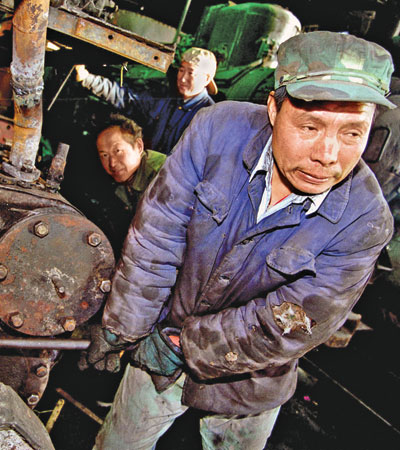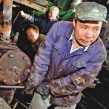
China’s Demographic Imbalances Widen
Publication: China Brief Volume: 9 Issue: 22
By:

Even as the Chinese economy under the Hu-Wen administration is set to wean through the global financial crisis with a remarkable eight percent growth rate this year, senior officials from the Ministry of Civil Affairs under the jurisdiction of the State Council, which is responsible for social and administrative affairs, revealed that China’s aging population—people older than 60 years old—reached 12.79 percent (169 million) of the total population at the end of 2008 (Xinhua News Agency, October 26). Amid a slowdown in its working-age population growth and surplus labor depletion, China’s rapidly aging population is placing a serious strain on the sustainability of its current economic growth mode and thus, is of great concern for the Chinese leadership, which has a low tolerance for political instability.
China became an "aging society" in 1999 after the composition of people over 60 years within its entire population broke the 10 percent benchmark. According to the latest statistics released by the Ministry of Civil Affairs, in less than 10 years, the aged population increased by 50 million and exceeded the entire population of Jiangxi Province (China Times [Taiwan], October 26; Xinhua News Agency, October 26).
In a candid response to reporters, Wang Zhangyao, the secretary for the promotion of social welfare and charity bureau within the ministry, stated that, "China is rushing into an aging society at a speed that is exceeding our imagination." Wang further noted that if current trends persist, by 2050, the old age-population ratio would shrink from the current ratio of nine to one, to three to one (Xinhua News Agency, October 26).
According to Wang Guangzhou, a professor at The Institute of Population and Labor Economics at the government-think tank Chinese Academy of Social Sciences (CASS), the working-age population in China was estimated at 70 percent (918 million) of the total in 2005. That percentage is expected to increase to 72.14 percent of the country’s total and many experts believe it will peak at 997 million by 2016 (National Population and Family Commission of China, August 23, 2006; China Brief, December 8, 2008). Cai Fang, director of the institute, added that the decreasing levels of dependency (people not in the labor force on those in the labor force) in China’s labor force, which had fueled China’s per capita Gross Domestic Product (GDP), is diminishing. In addition, by 2013, the dependence ratio will stop declining and with an aging population, China’s dependence ratio will increase (China Economist, July-August).
In spite of its eight percent growth rate—the common assumption among official economists is that a 7 percent growth rate will translate into 25 million to 30 million new jobs per year—China is far from being on the road to a stable economic recovery, and the global economic crisis has exacerbated an already serious unemployment crisis (China Brief, February 4). According to some estimates, China’s official unemployment rate stands at about 4 percent (Asia Times Online, October 22). Yet the PRC’s 150 million migrant laborers that make up a significant portion of China’s urban labor market are not accounted for in government unemployment data (China Brief, December 19, 2008). Further evidence of this discrepancy in the skills of its imbalanced workforce, which do not match the demand from the current labor market, are reflected by a September report released by CASS, which stated that the earnings of Chinese graduates were now at par and even lower than those of migrant laborers (Asia Times Online, October 22).
There are clear signals that the central authorities in Beijing are concerned about the rapidly aging population problem. In Shanghai, where the old age-population ratio is highest, authorities have been permitted to break away from the country’s infamous One-Child policy, and since late July have been actively encouraging "eligible" couples to have a second child. According to Xie Lingli, director of the Shanghai Population and Family Planning Commission, "We advocate eligible couples to have two kids because it can help reduce the proportion of the aging people and alleviate a workforce shortage in the future" (China Daily, July 24).
The standing vice president of the China National Committee on Aging, Chen Chuanshu, reportedly stated that the next 25 years will be key for policymakers preparing to deal with China’s aging society, and that strategies must be developed to improve laws and regulations, as well as socio-economic policy adjustments to deal with all the preparations for an aging society (Xinhua News Agency, October 26). Chinese analysts, however, have warned that piecemeal measures will not work and only a holistic approach that takes into account education, health, industrial, financial, and labor will ensure that China’s “demographic dividend” does not turn into a "demographic debt” (China Economist, July-August).





